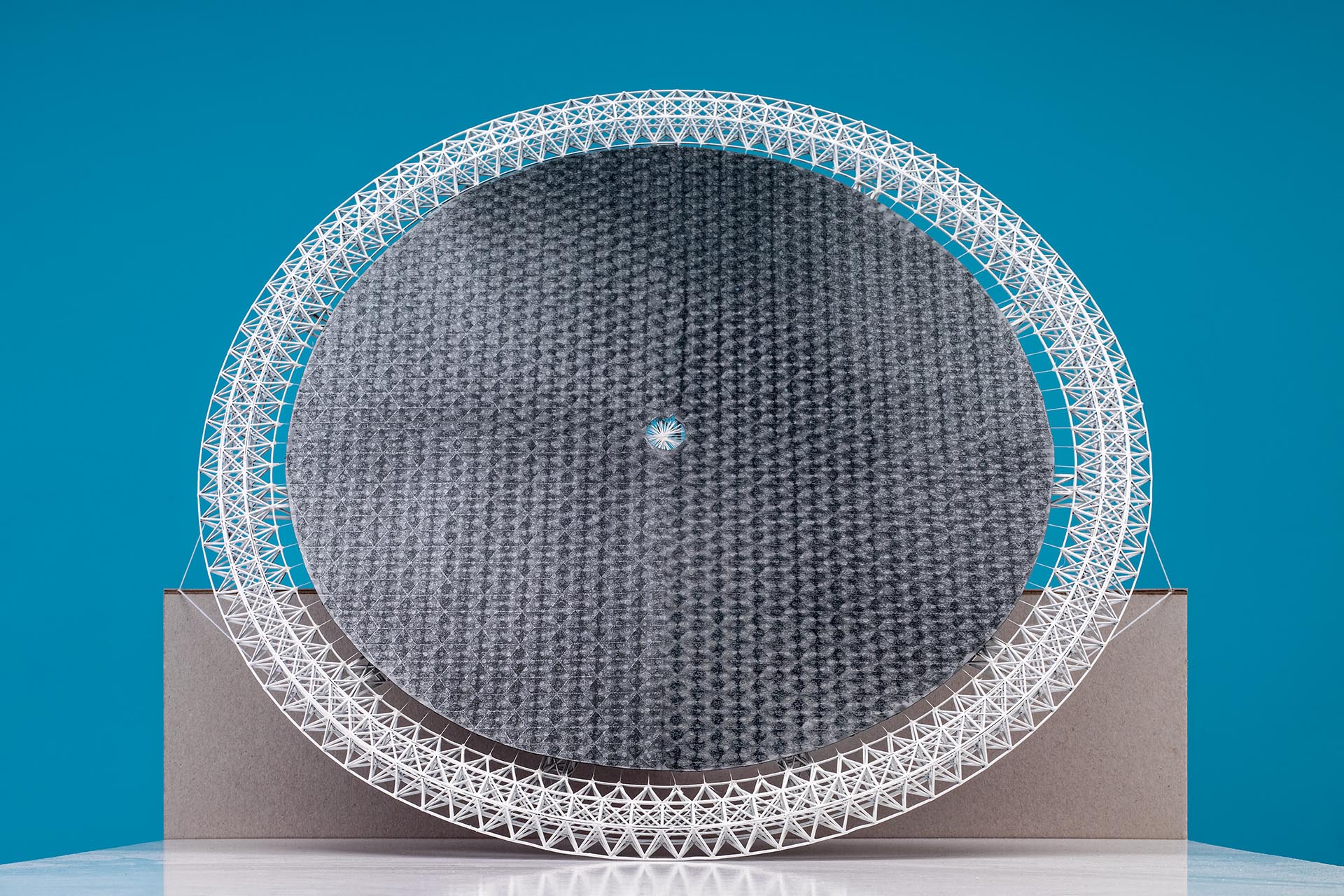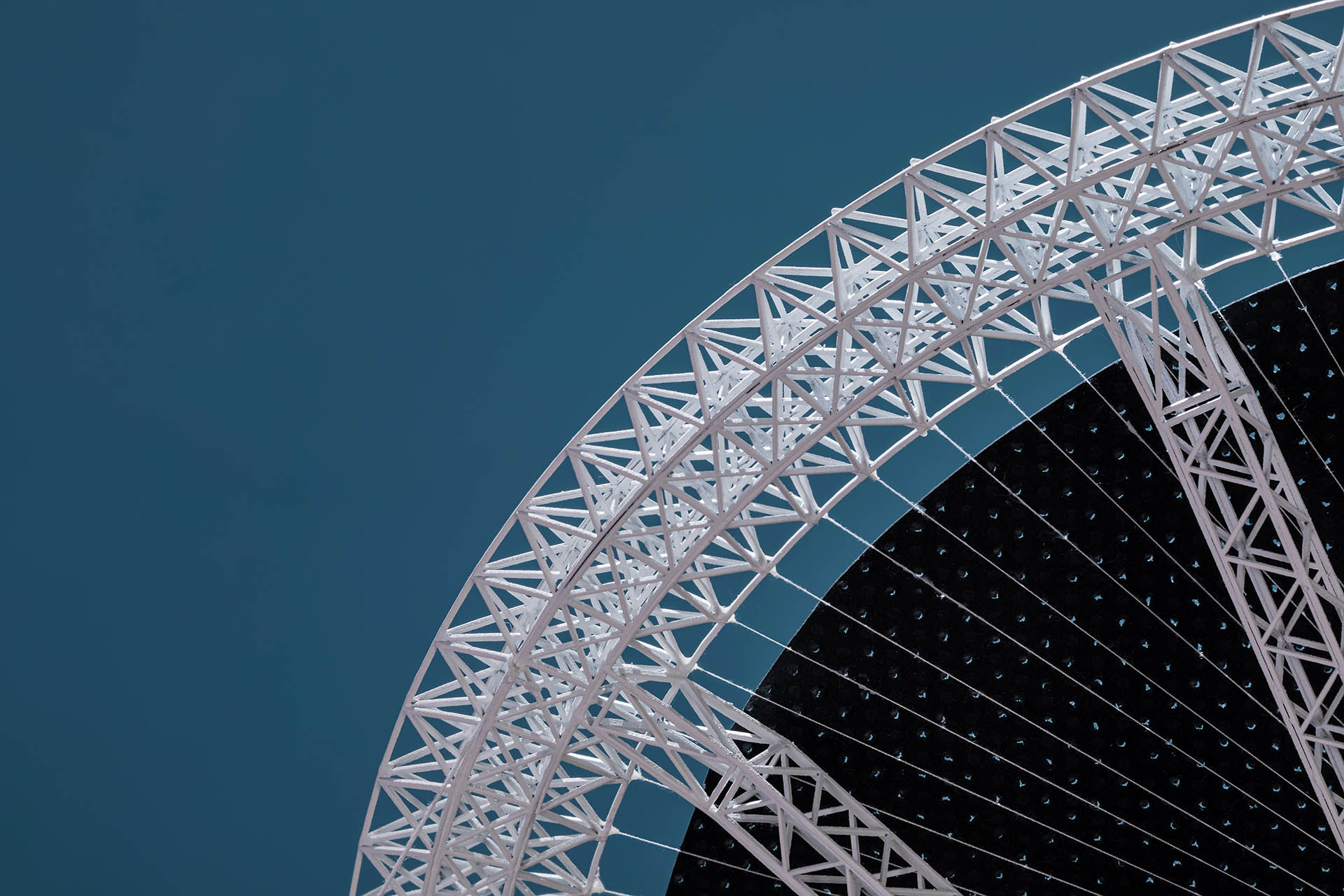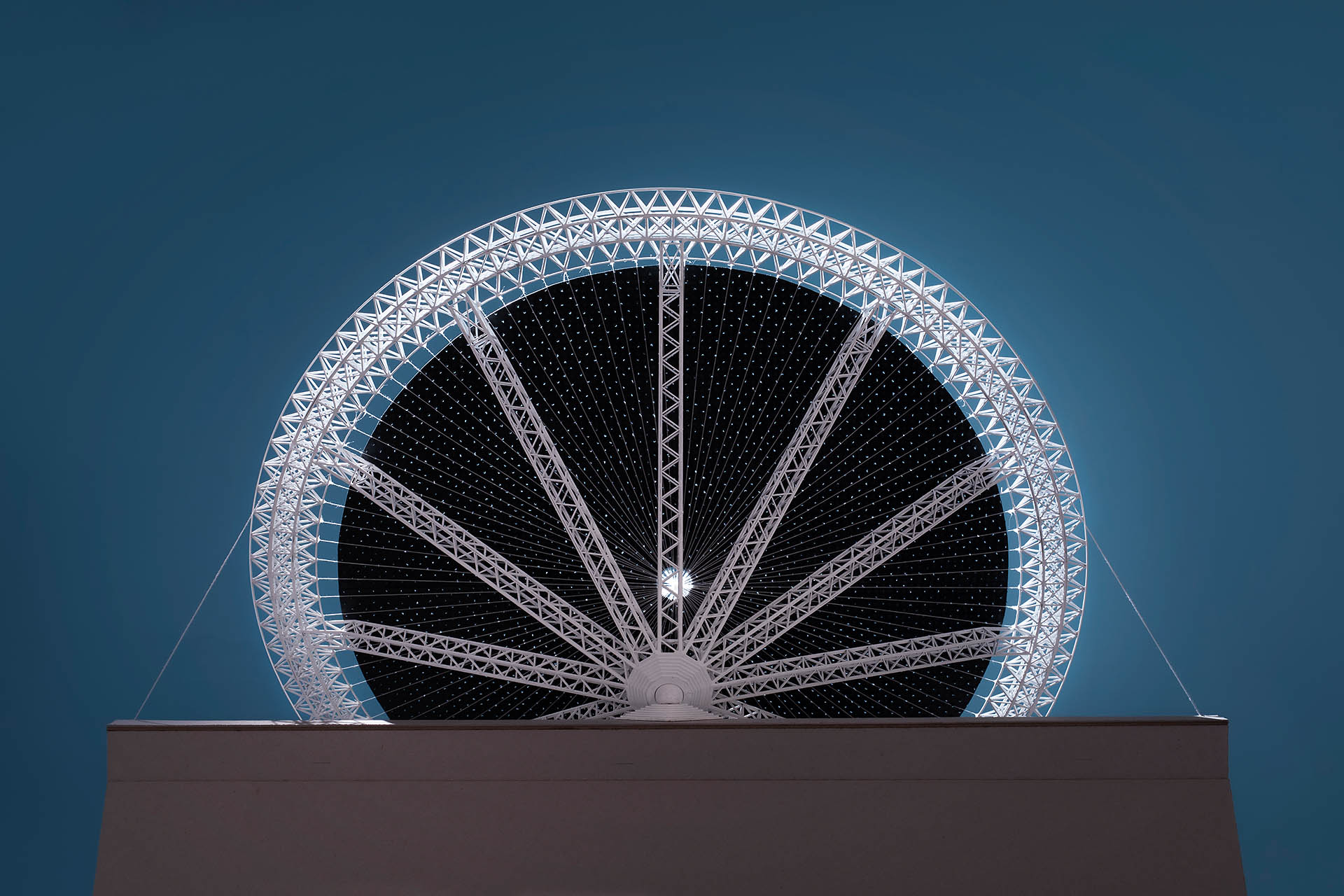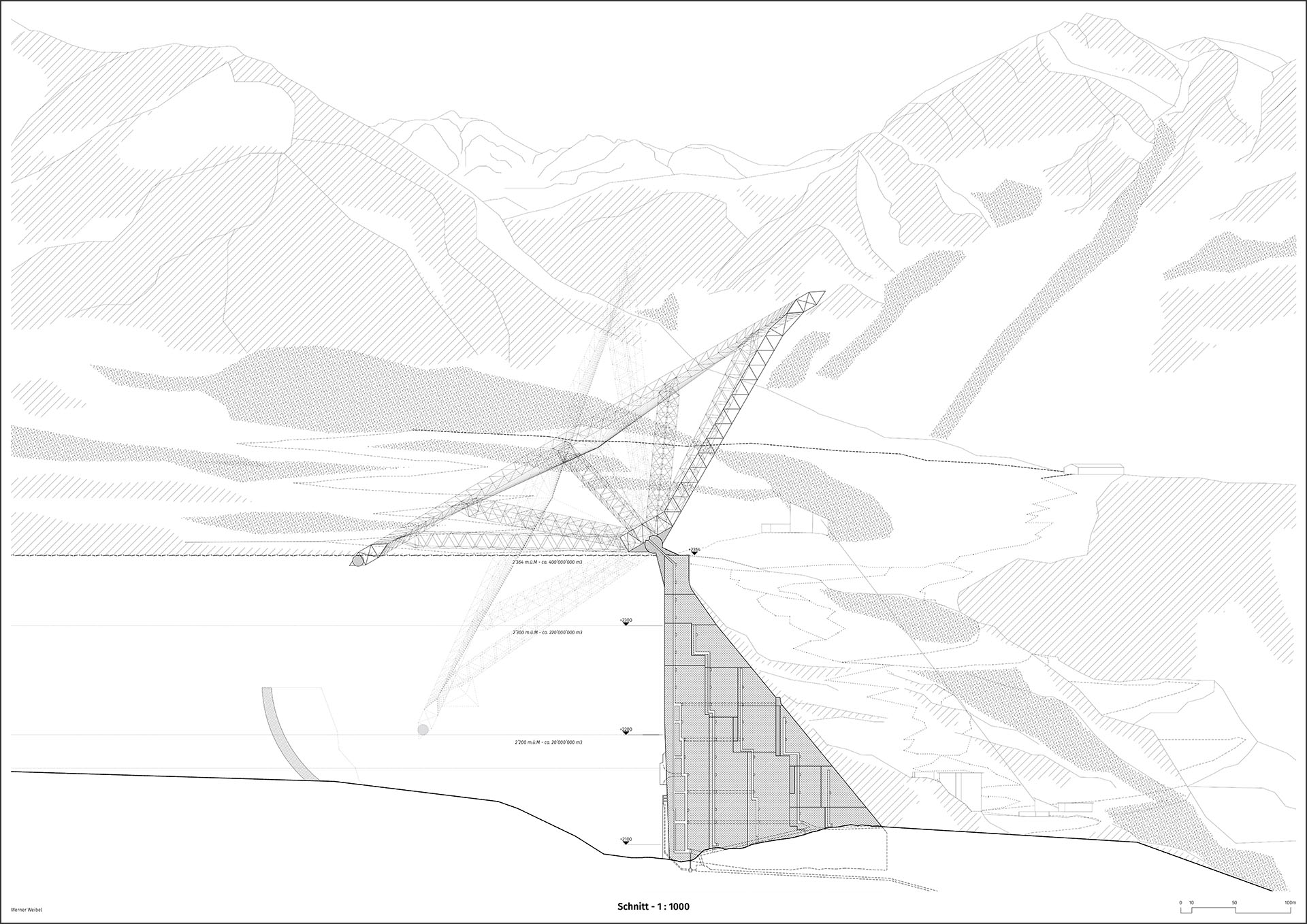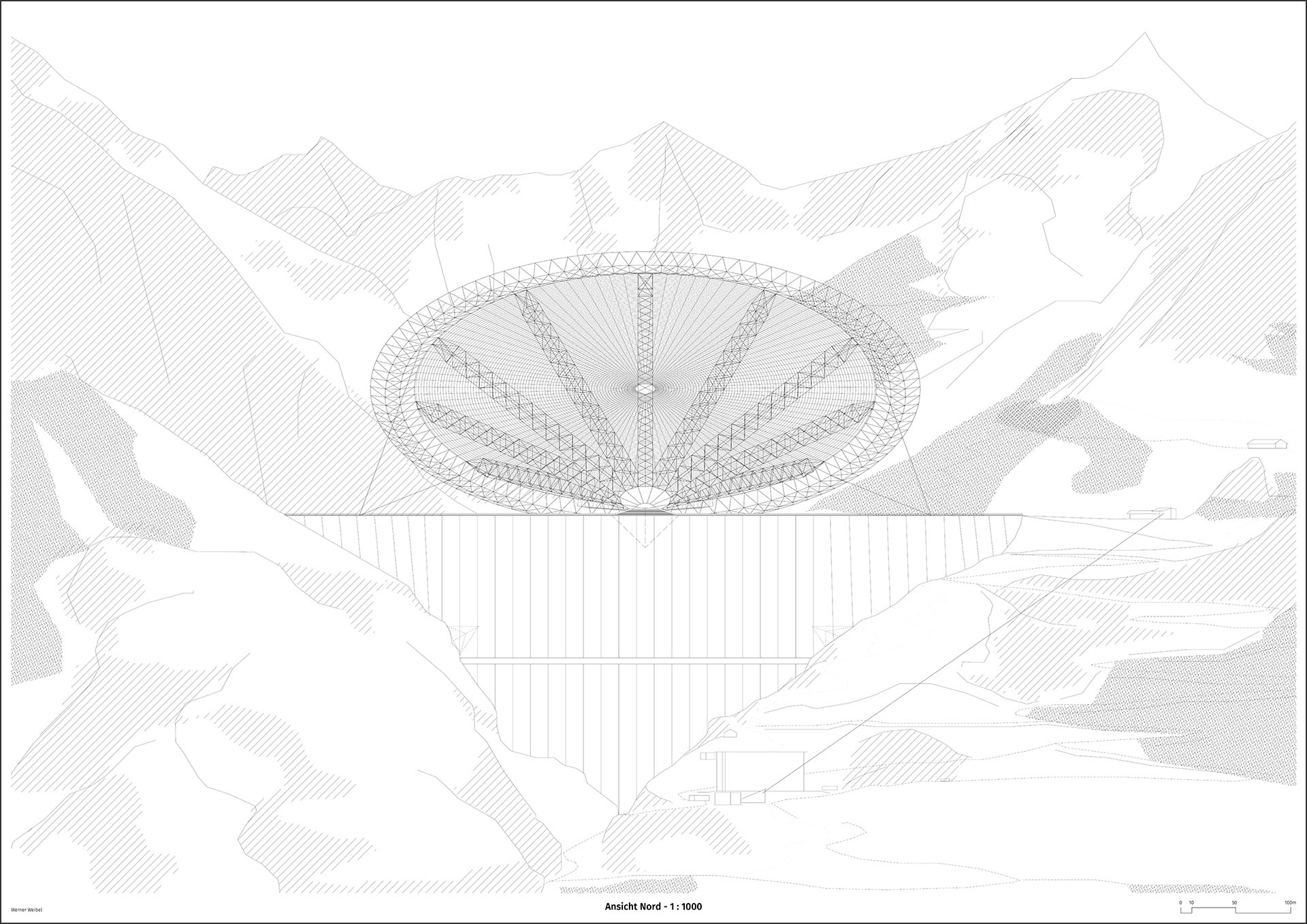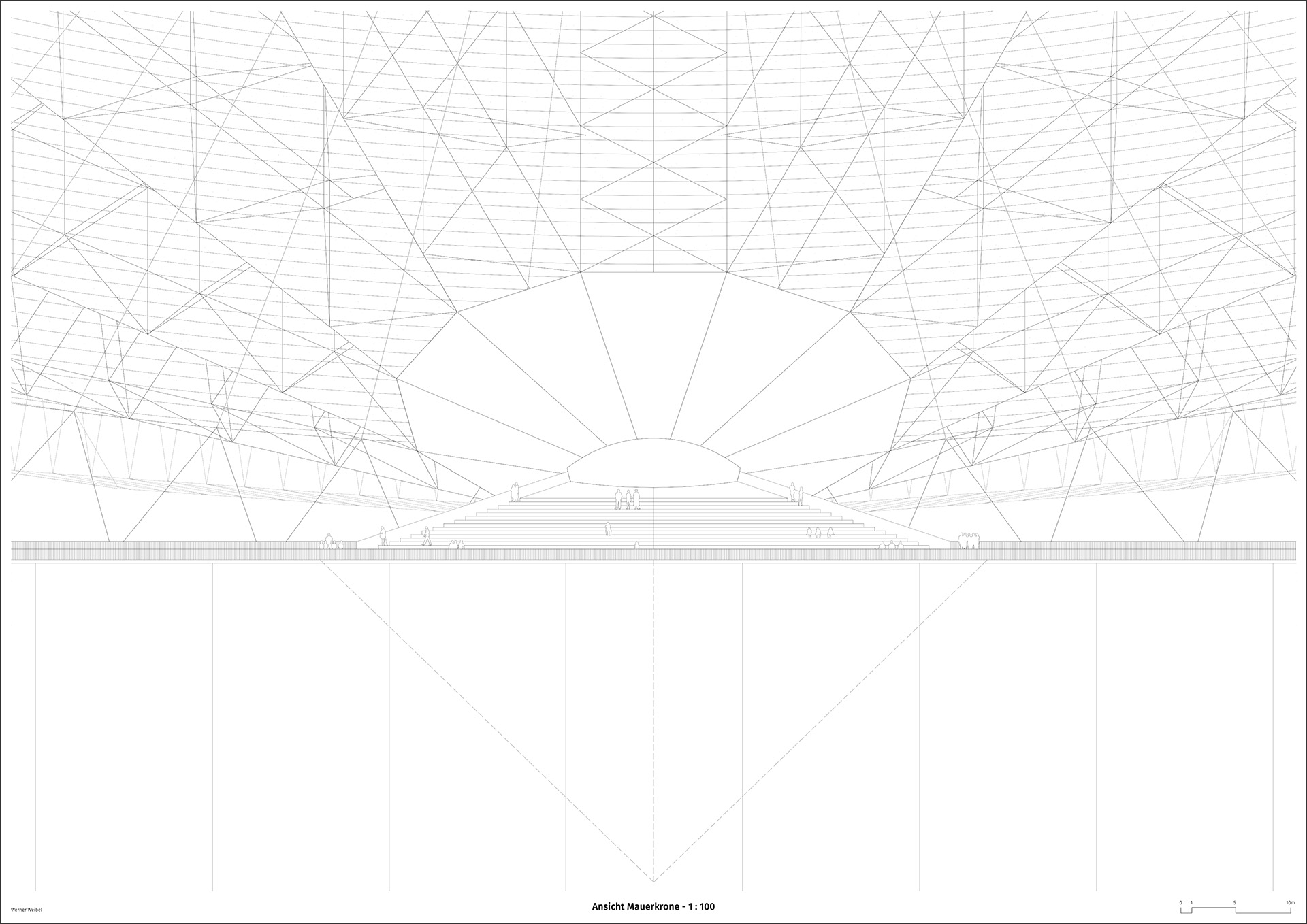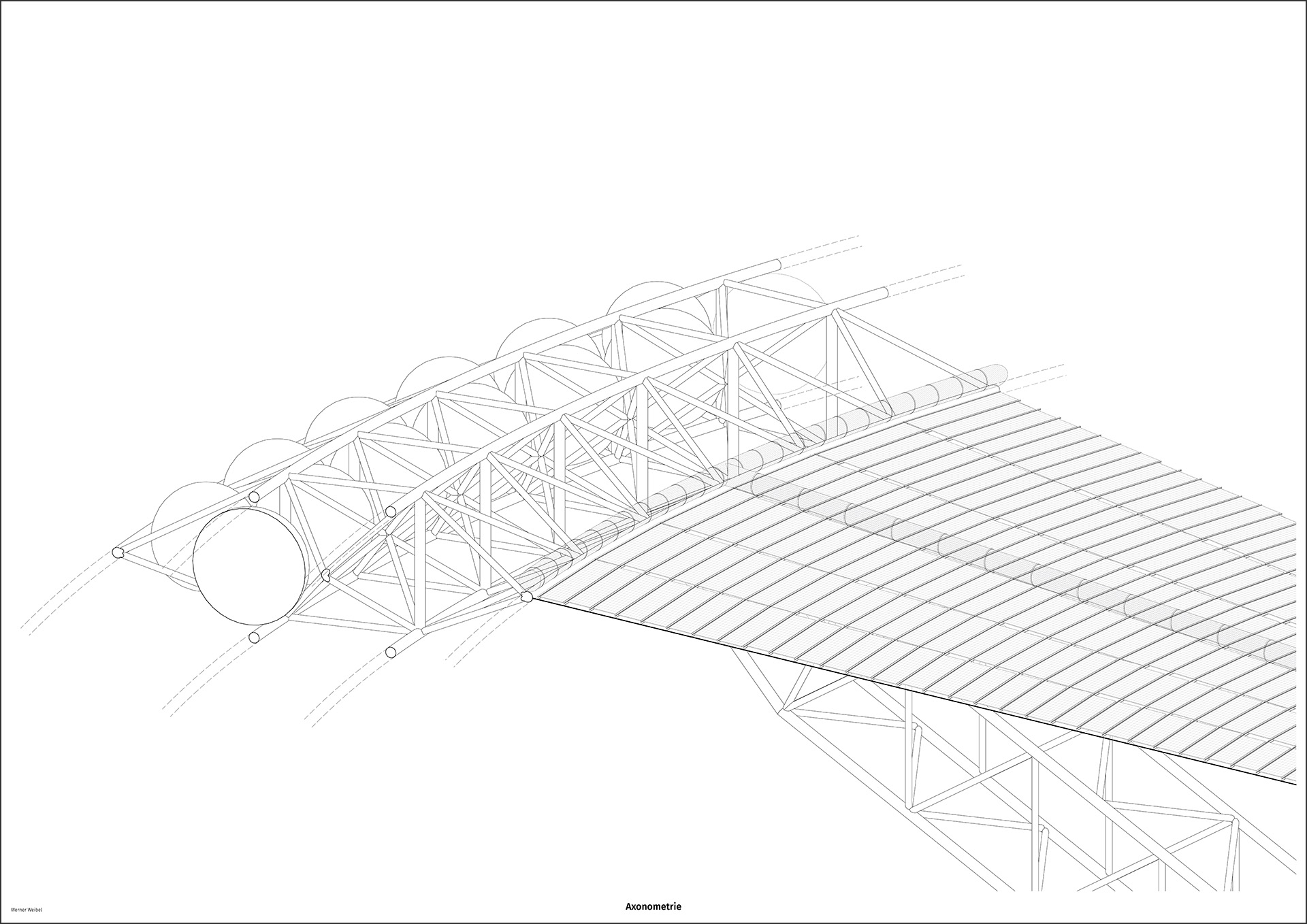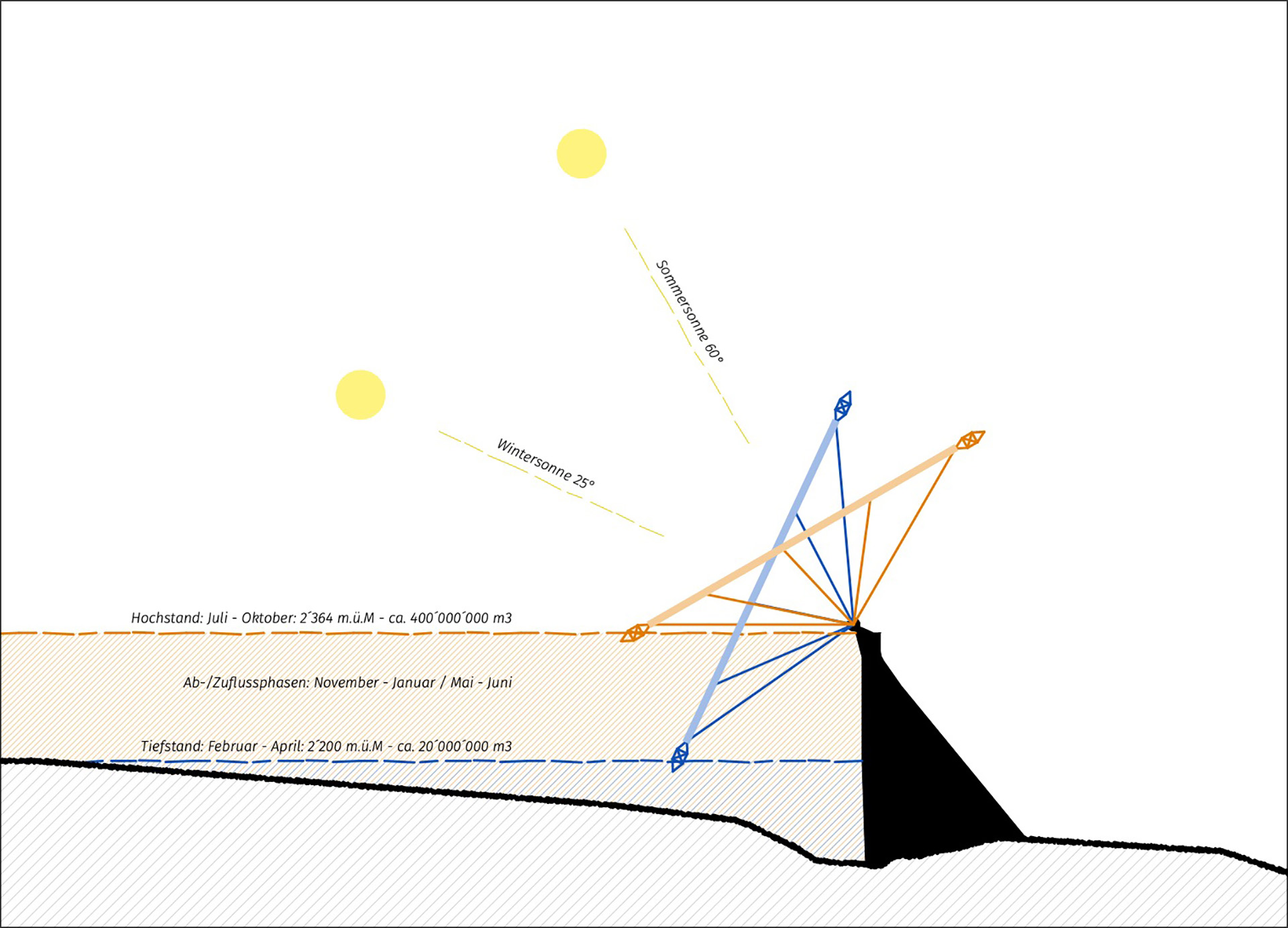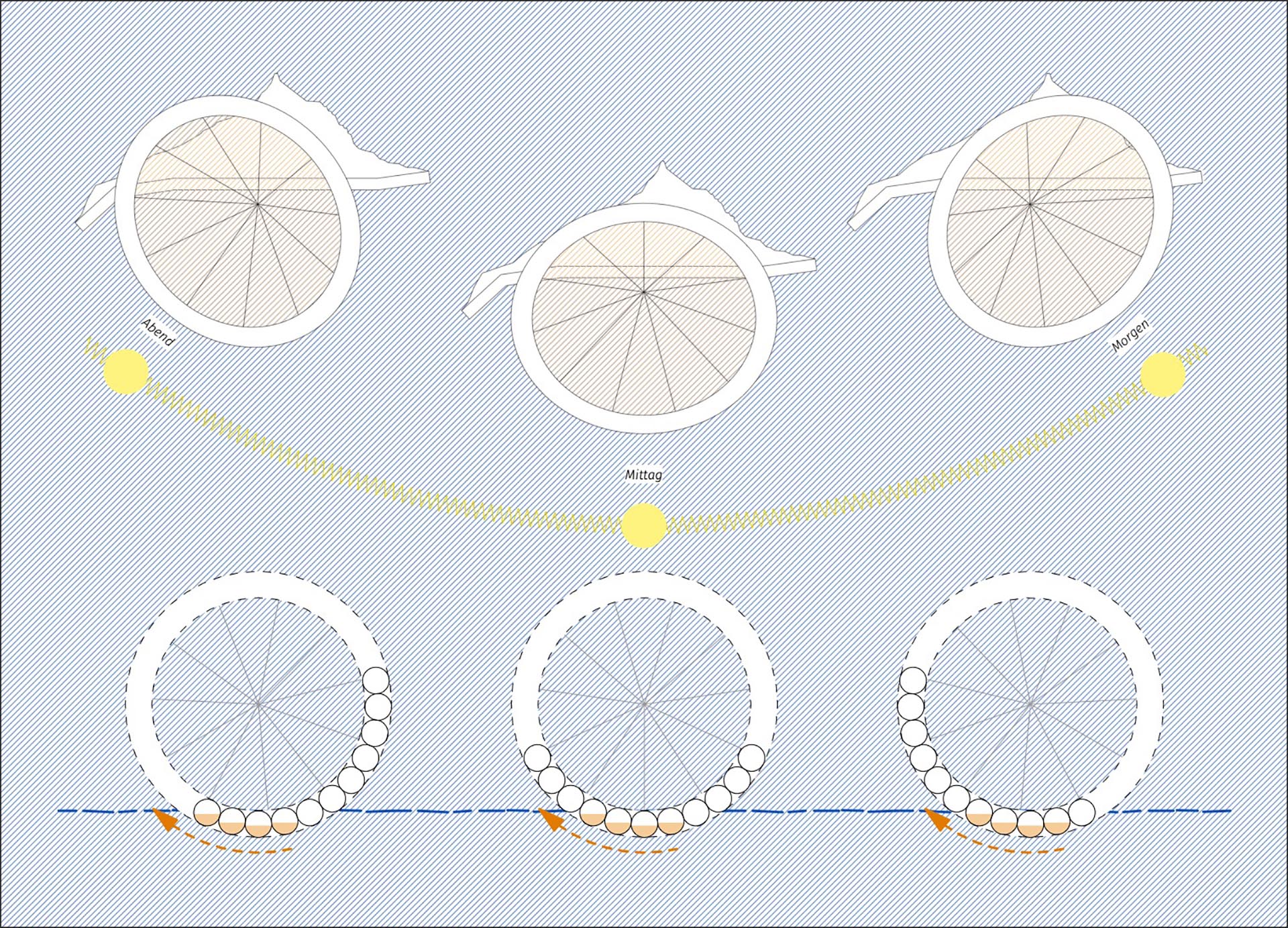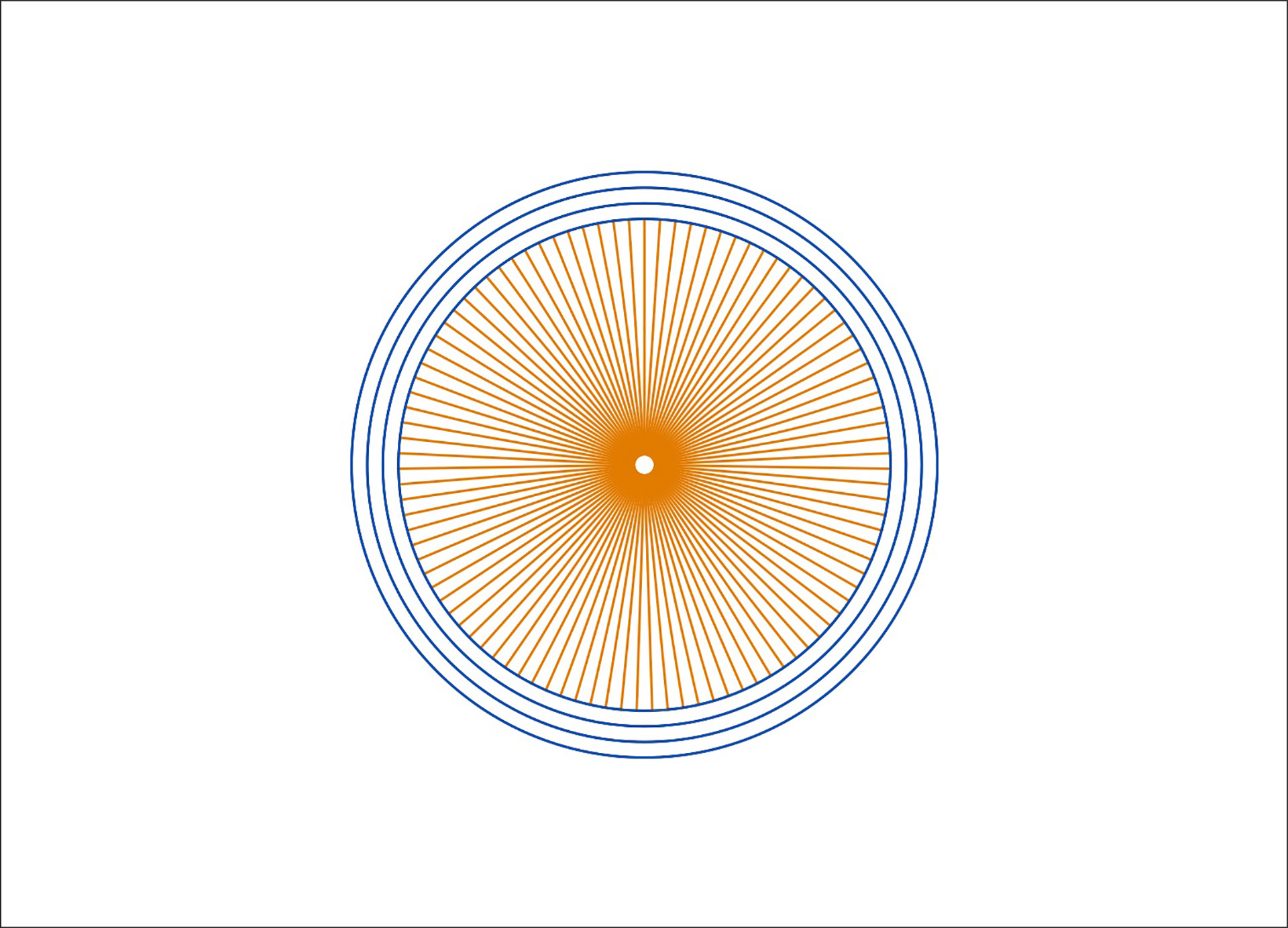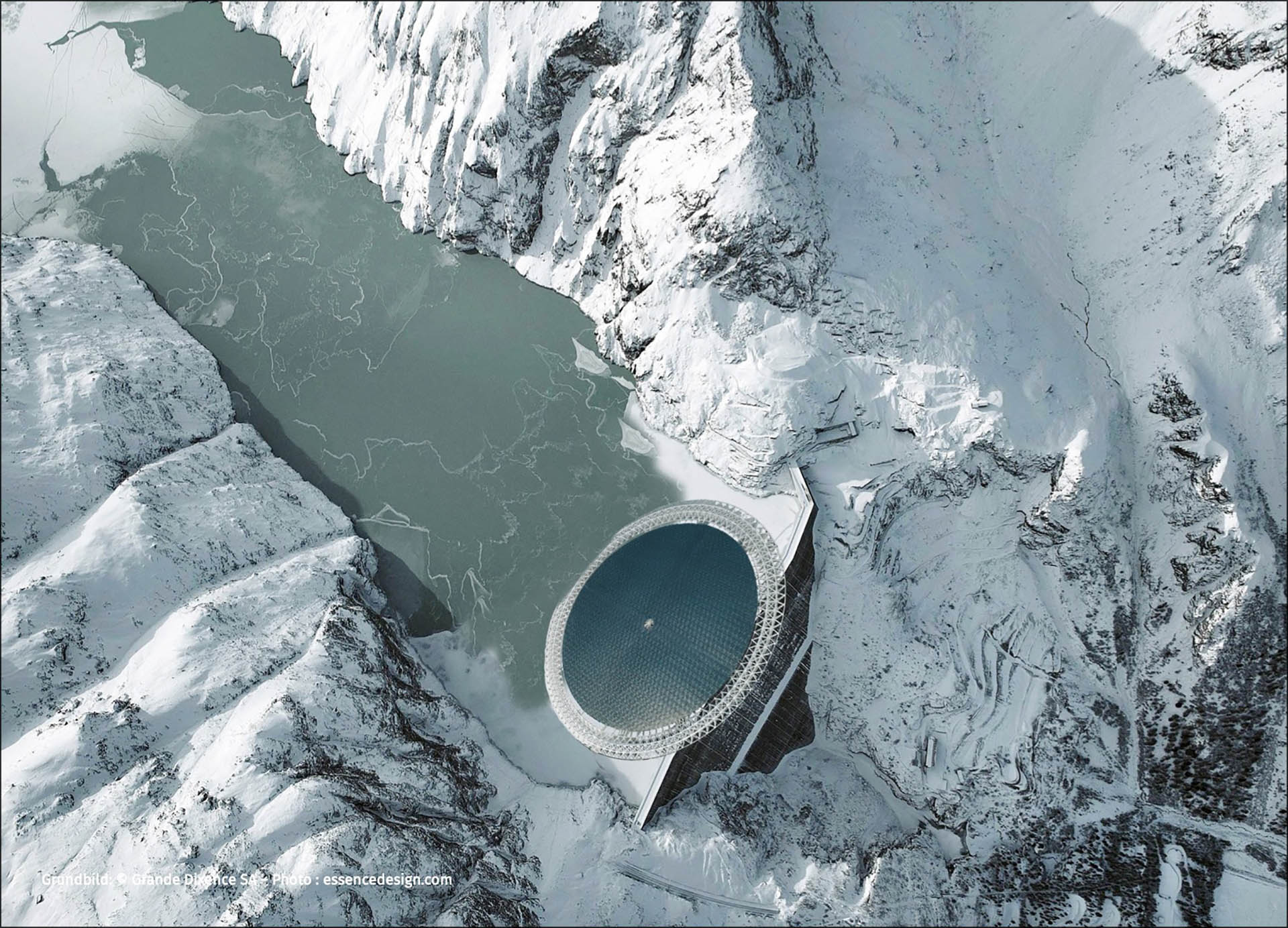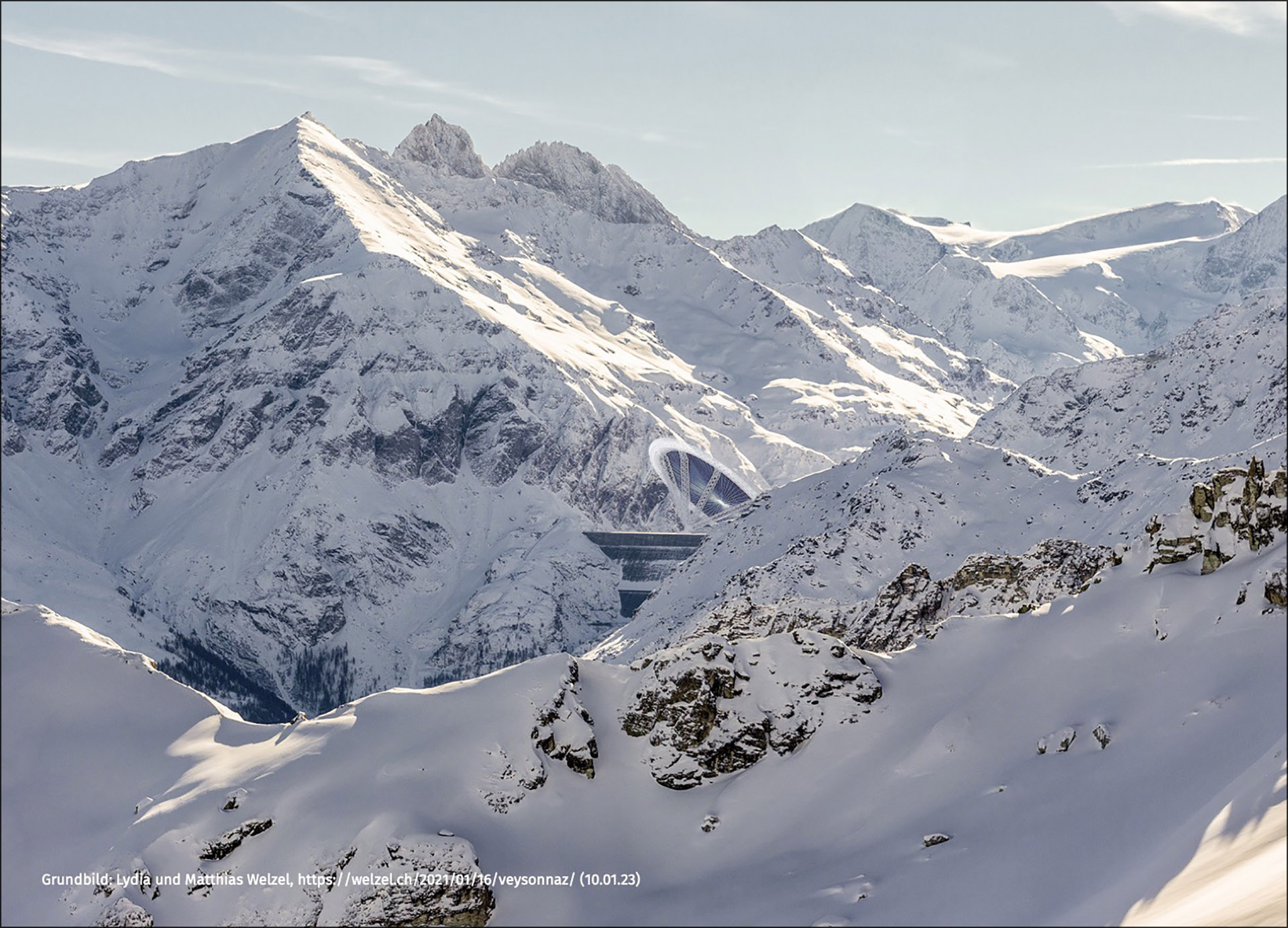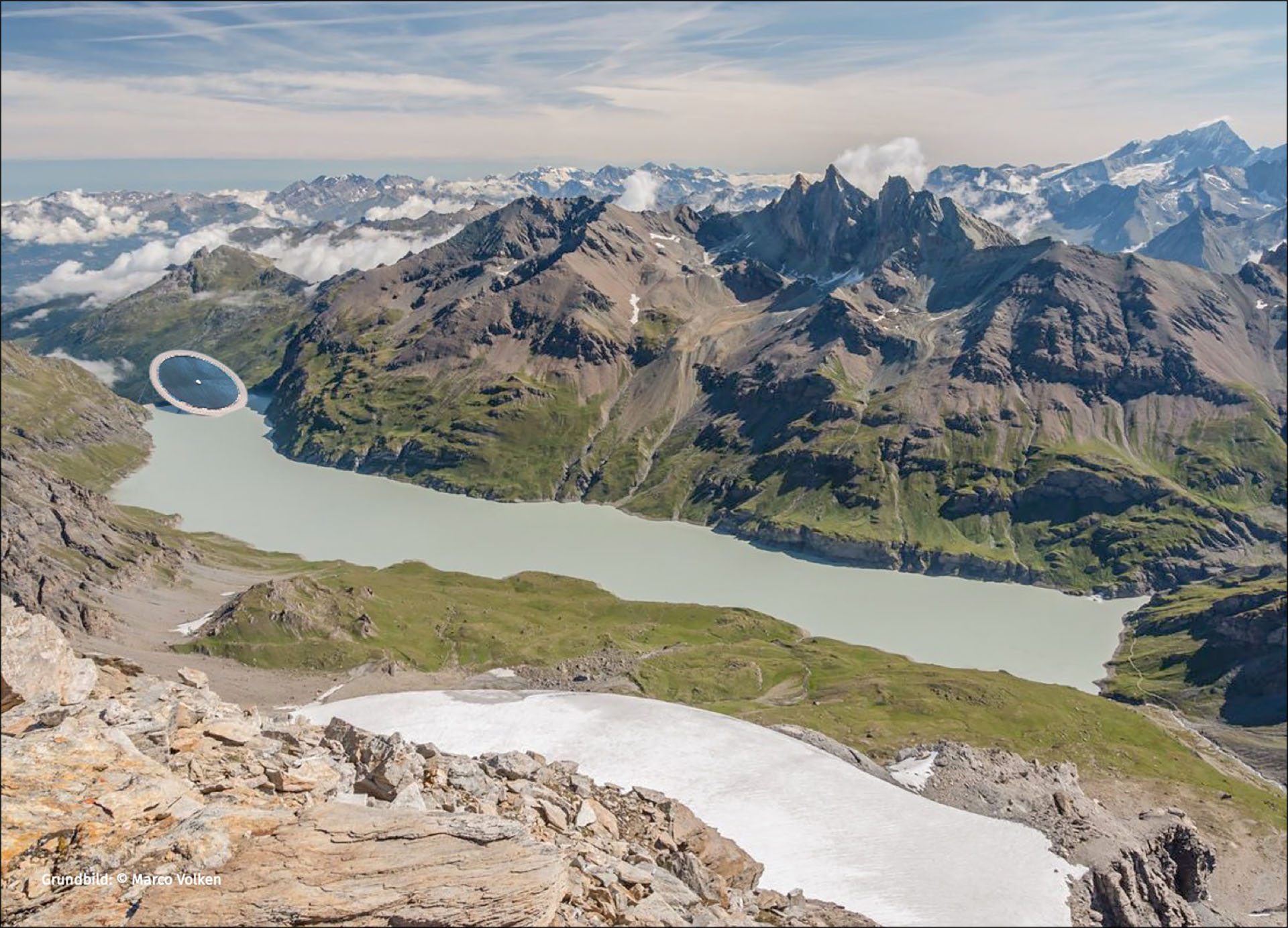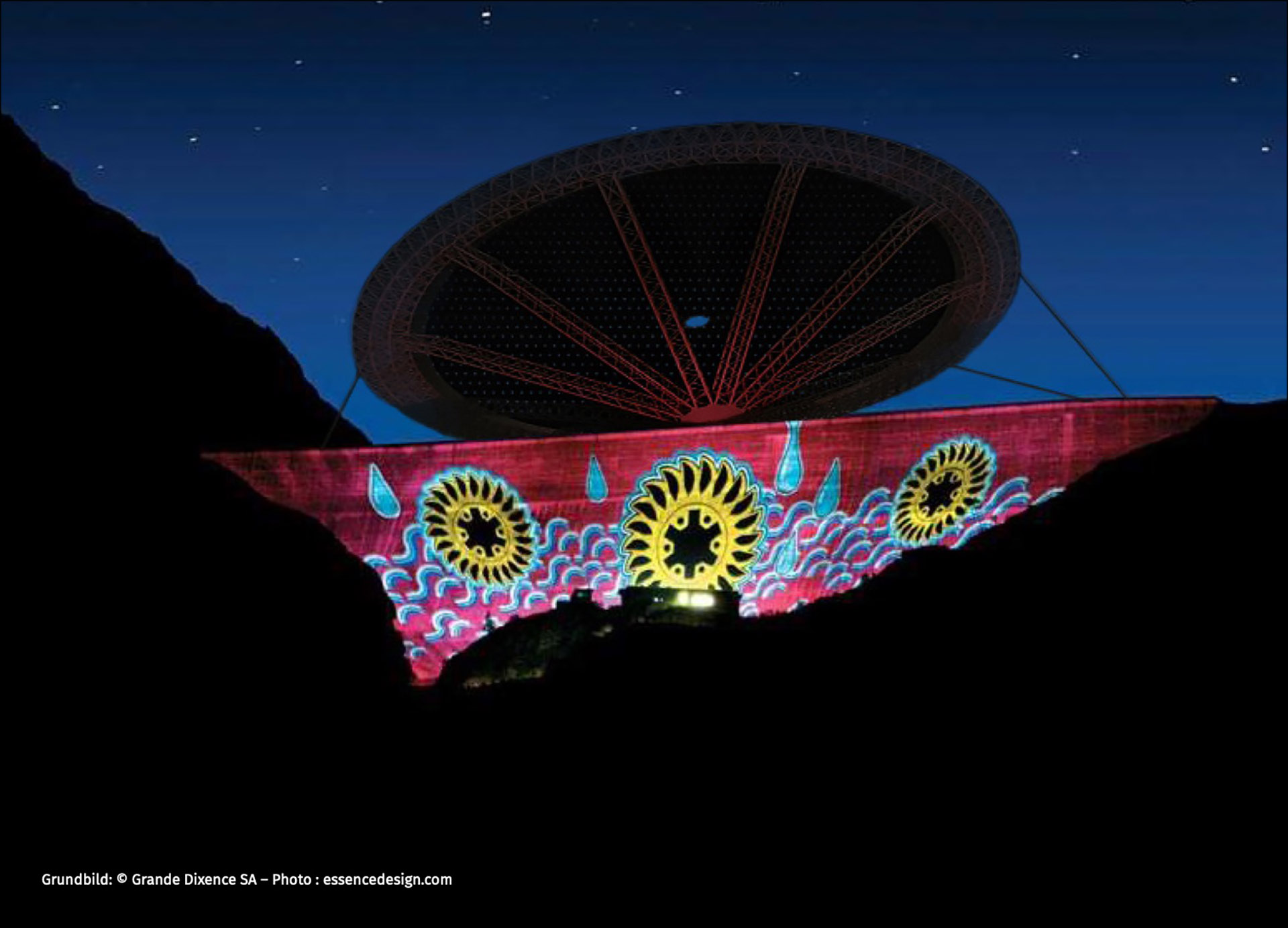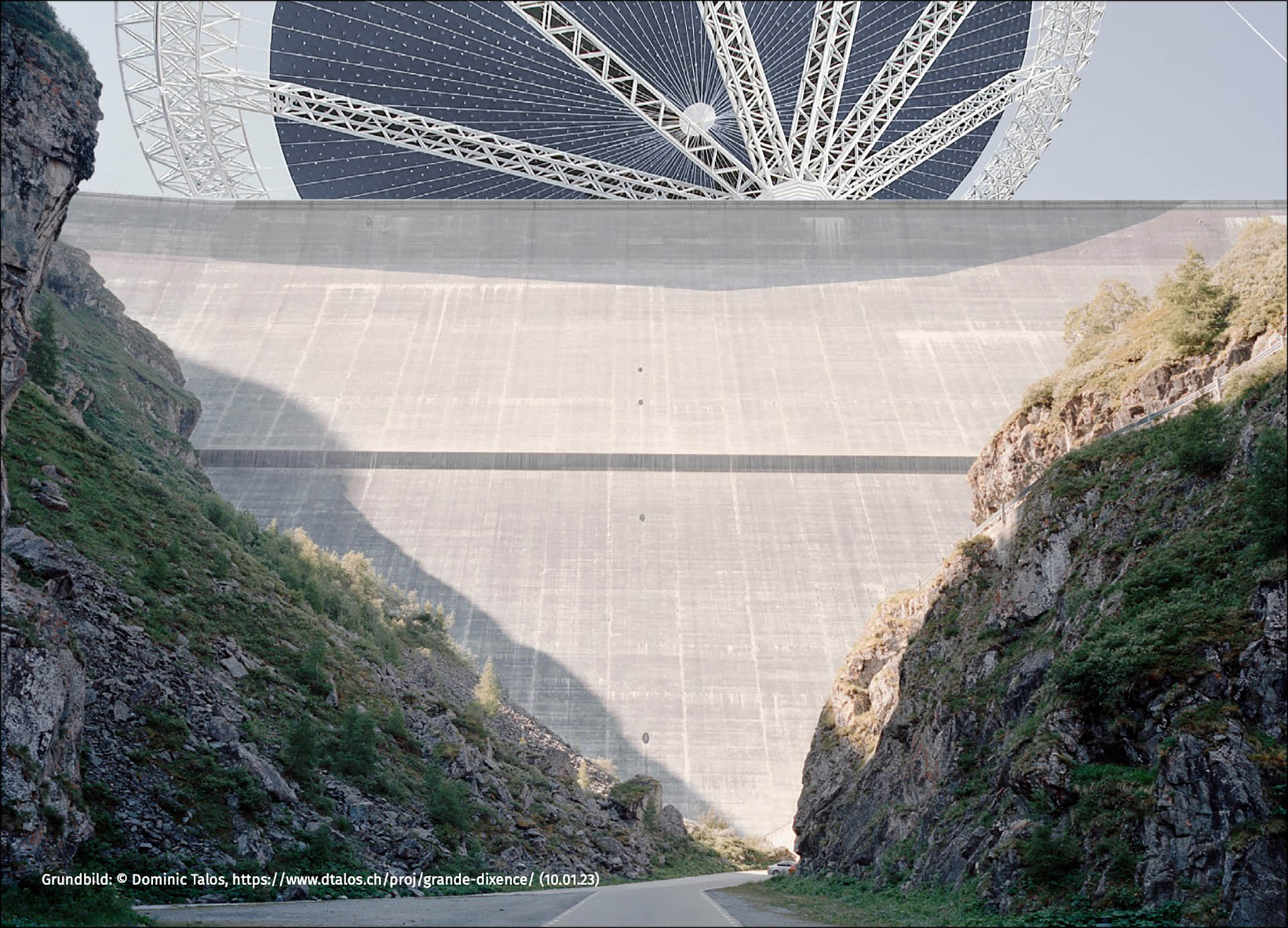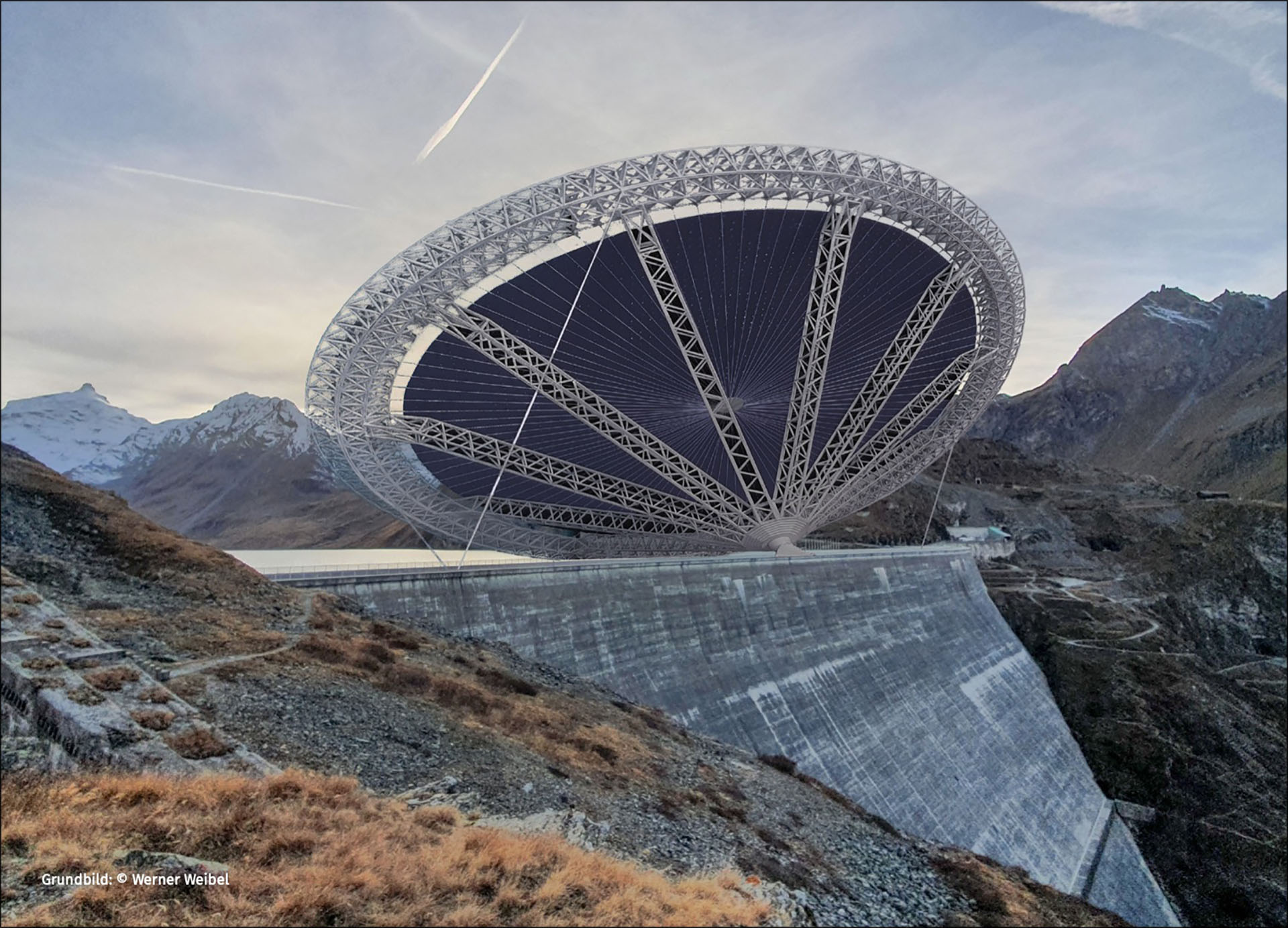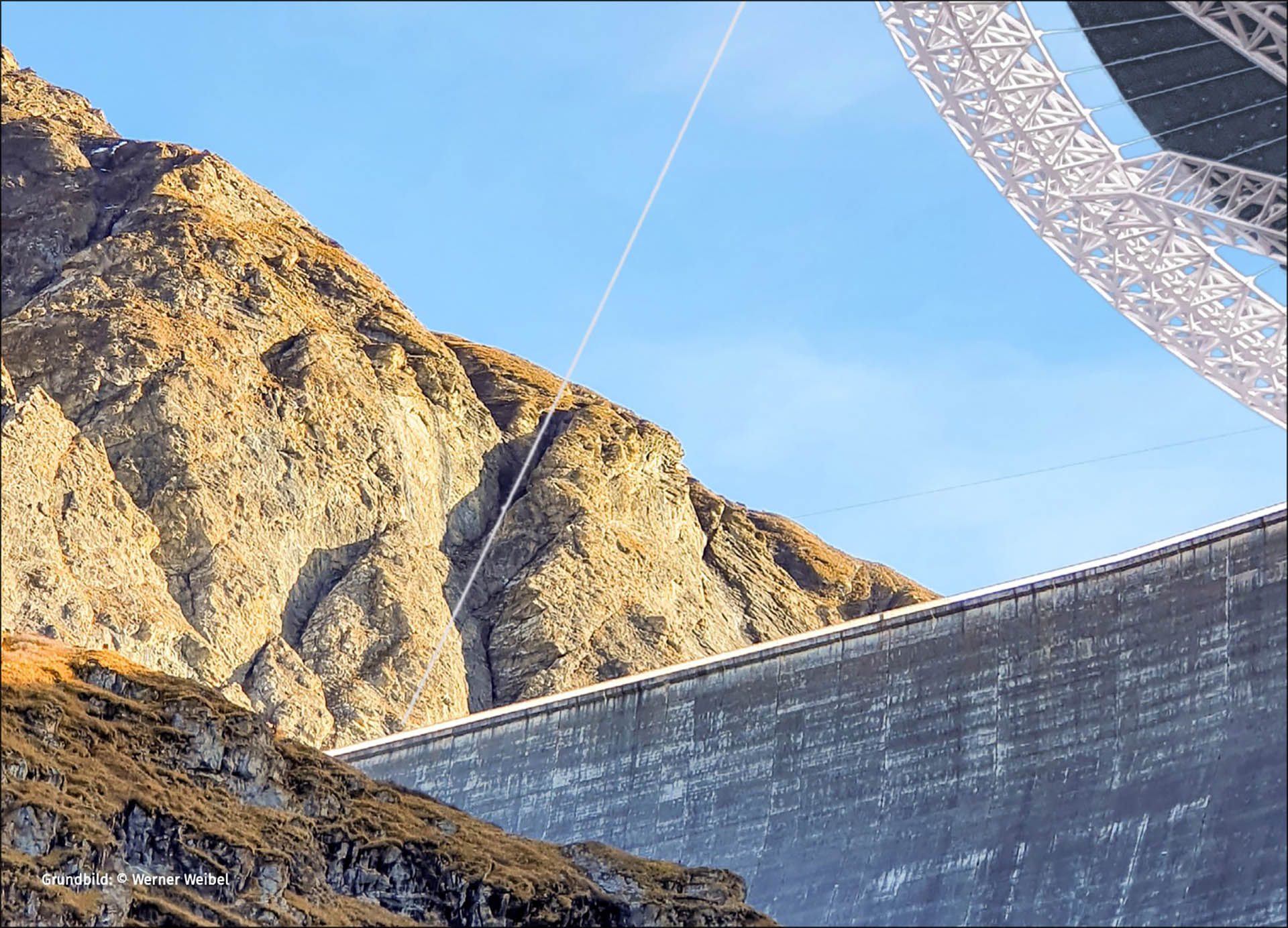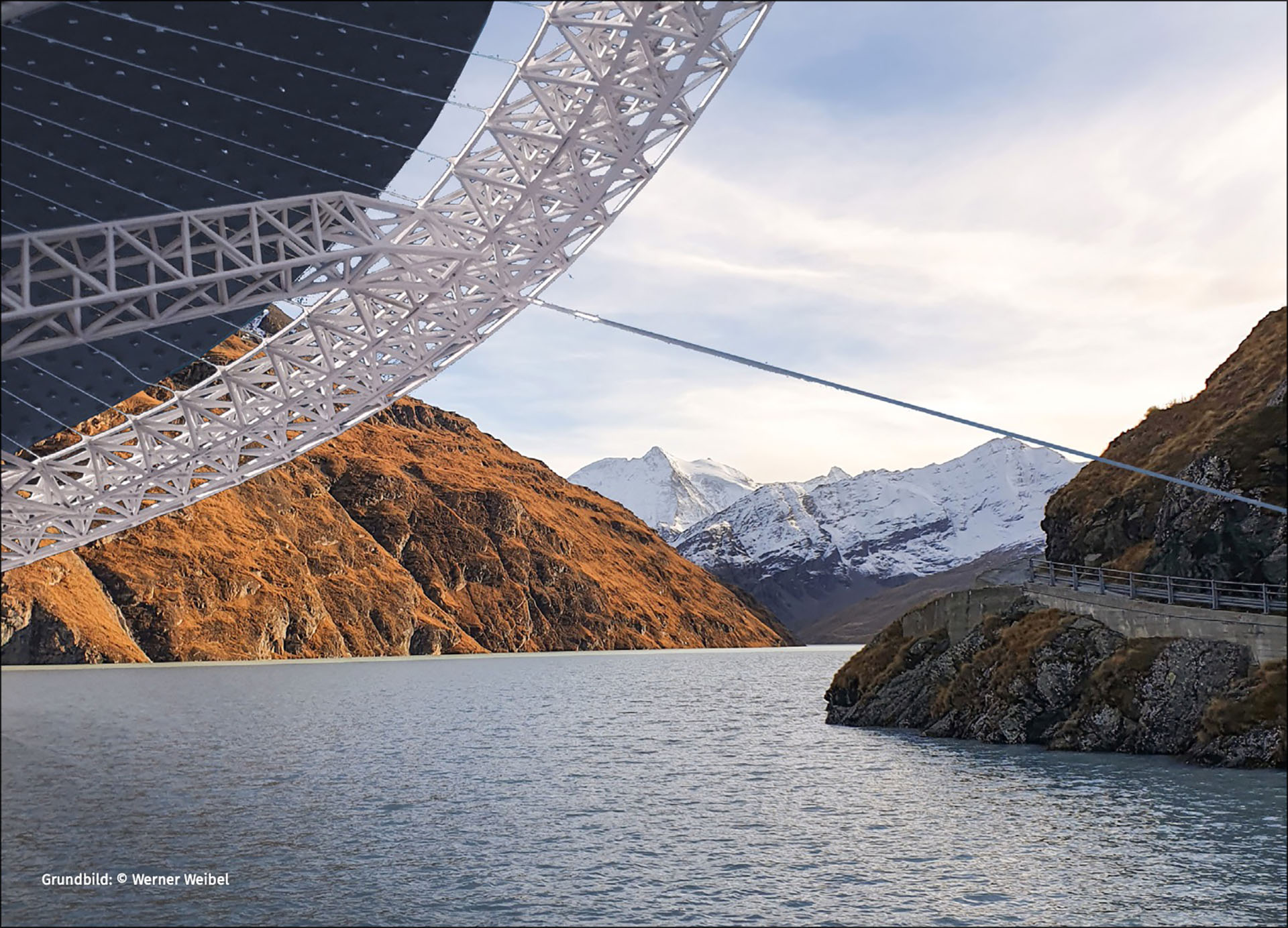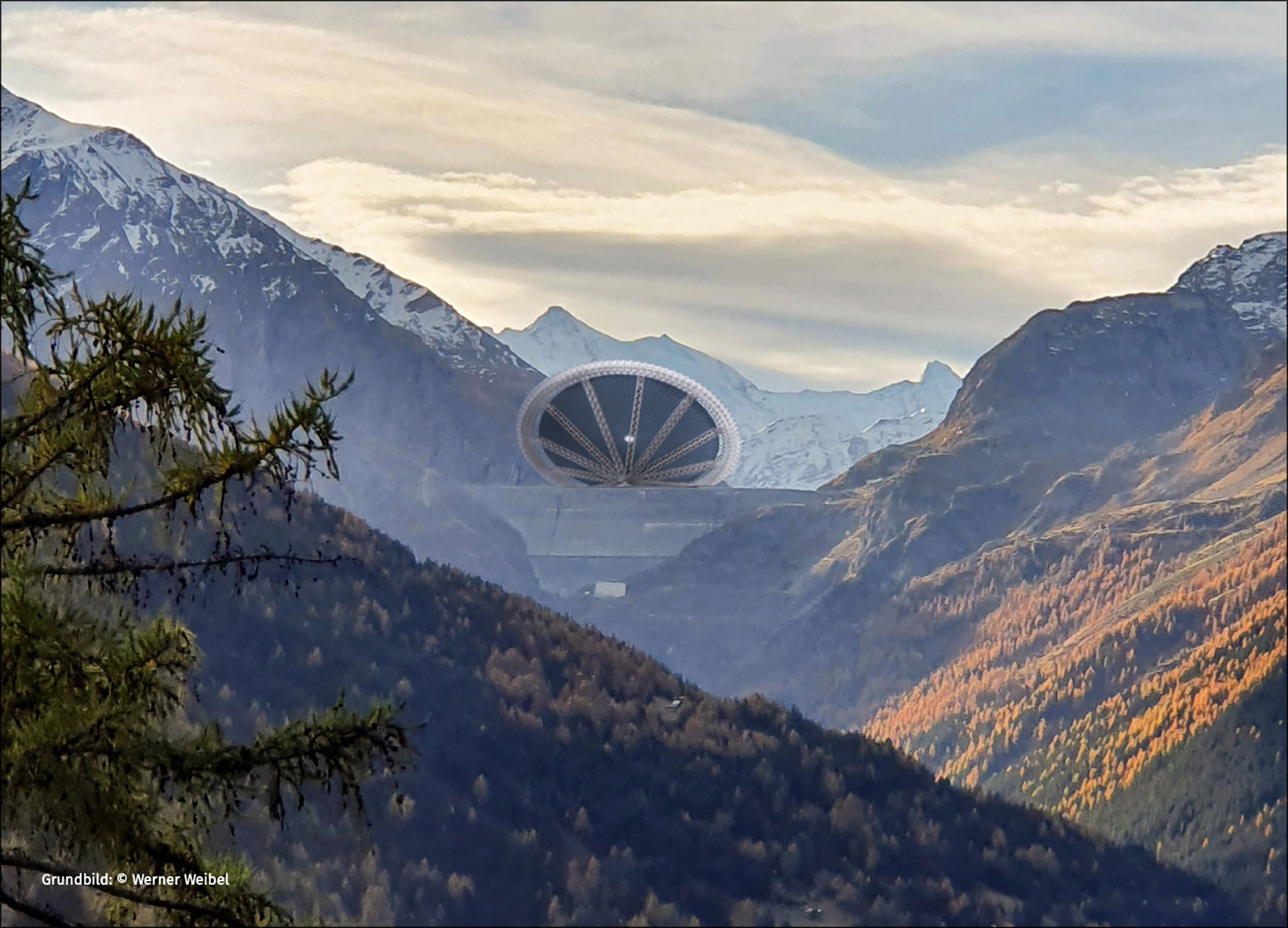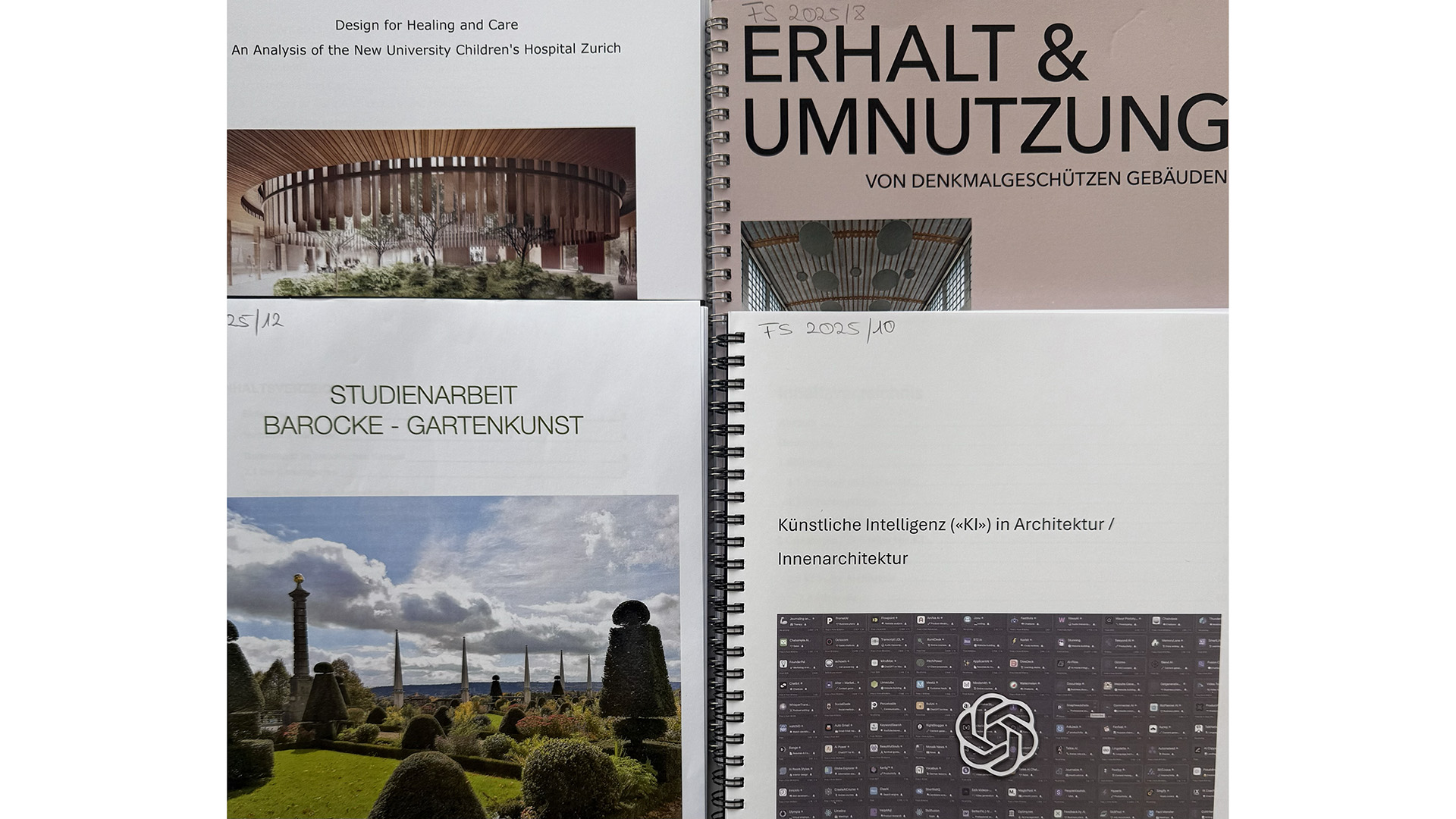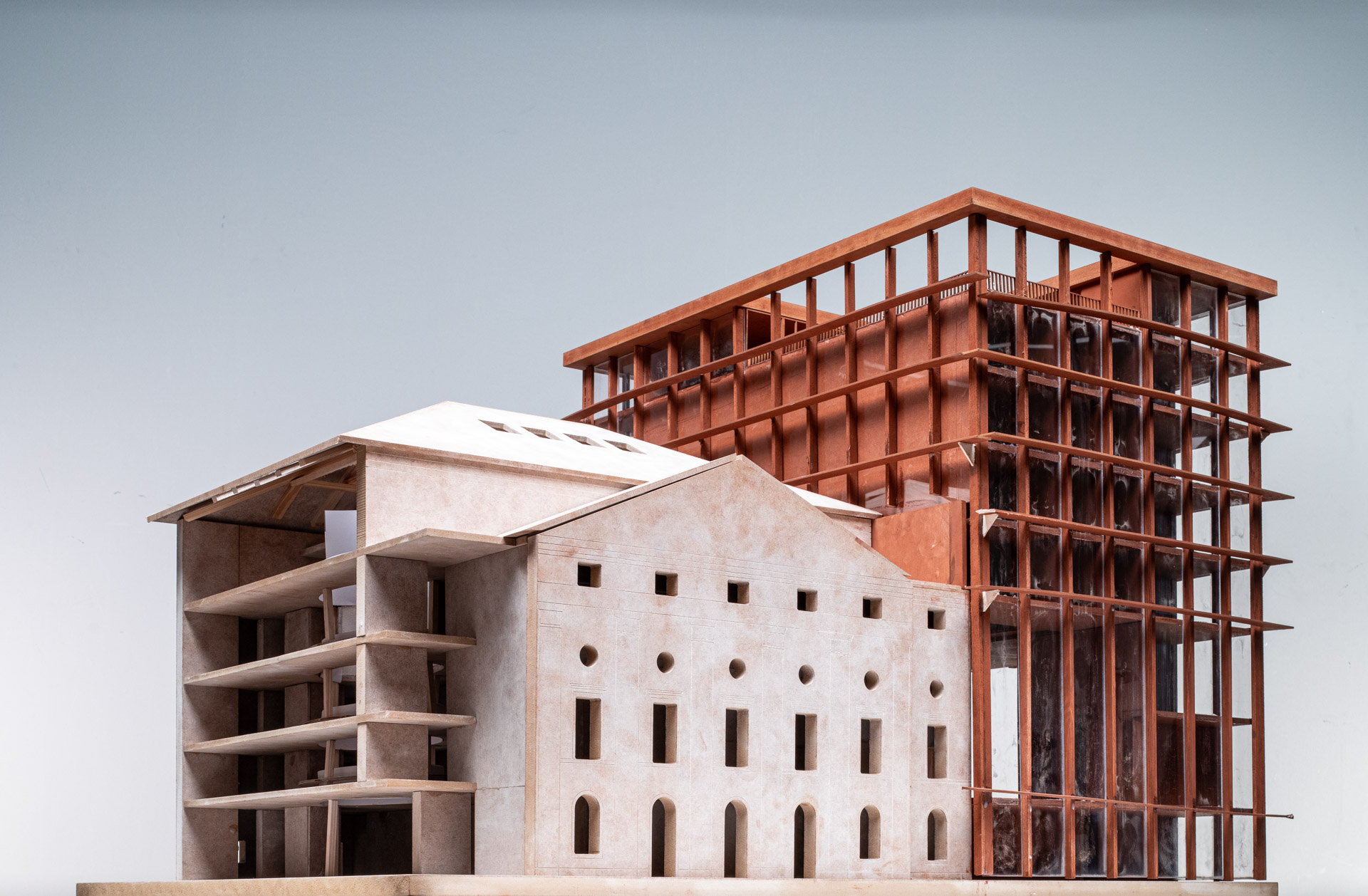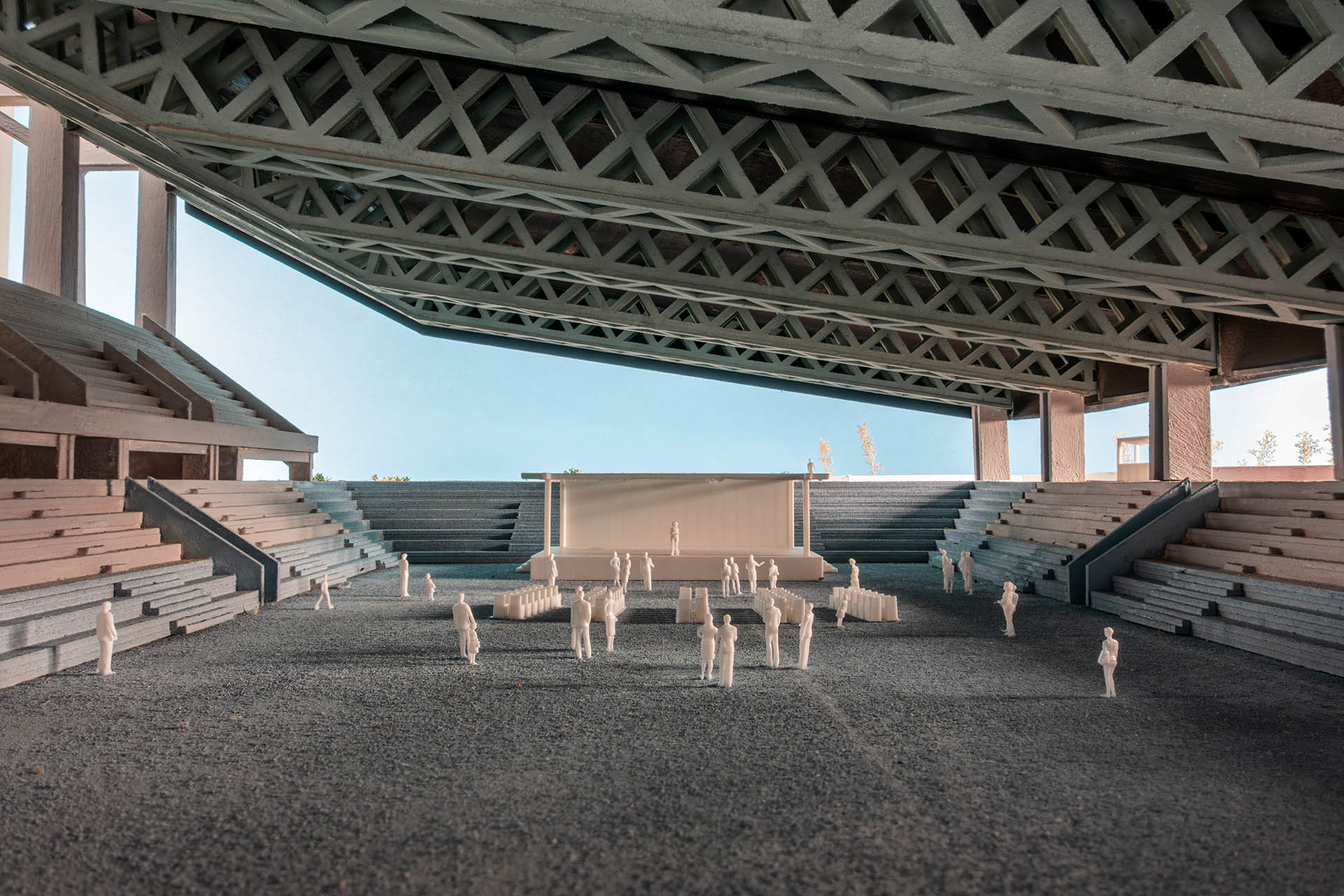La Plus-Grande-Dixence
The task in the Master’s program «Architecture & Structure» did not correspond to a typical design task in the autumn semester of 2022. It was about an infrastructure facility for the generation of renewable energy.
With the outbreak of the war in Ukraine at the end of February 2022 and the resulting energy crisis in connection with the partial suspension of Russian gas and oil supplies, the debate about the energy transition has significantly increased. Within a very short period of time, the federal government lowered the hurdles for the construction of large-scale renewable energy plants and offered the prospect of generous subsidies (up to 60% of the investment costs). As intended, these measures have led to projects for renewable energy plants being developed almost every week and presented and discussed in the course of 2022. In particular, various photovoltaic plants are being planned in the alpine region, which are intended primarily to help overcome the shortage of electricity in winter. It is not uncommon for architects to be almost completely absent from these projects and the debates held on them. In order to counteract this circumstance, at least on a student level, the professors responsible for the focus «Architecture & Structure» set the task of planning an infrastructure plant for the production of renewable energy in Switzerland. The plant had to be of relevant size and integrate well into the landscape.
Project by Werner Weibel
When looking for a suitable location for a solar power plant, several factors are of central importance. In terms of solar radiation, there are also significant differences in Switzerland depending on the region and altitude. For example, around 20-30% more energy can be generated at locations in the alpine region, since the number of hours of sunshine is increased by the lower cloud cover, among other things. If one assumes around 1,100 kWh/m2 average annual solar radiation in the lowlands, this amounts to up to 1,600 kWh/m2 in the southern alpine and high alpine regions.
Based on this insight, Werner Weibel selected the Grande-Dixence dam in the Val d’Hérémence (Canton Valais, south of Sion) for his project proposal. In addition to the suitable altitude (top of the dam 2’364 m above sea level), the Grande-Dixence dam is ideal for the installation of a photovoltaic system due to its enormous size (285m height, 695m top length, 5’960’000 m3 construction volume) and its north-south orientation. The location is also characterized by its charisma as the largest gravity dam in Europe and the existing infrastructure in the field of energy generation.
To a certain extent, the proposed project is to be understood as a supplement to the existing infrastructure. The approximately 135,000m2 photovoltaic surface is mounted on a cable structure within a pressure ring with a diameter of approximately 500m. The pressure ring, designed as a truss, is a statically ideal system (according to the principle of a bicycle wheel) and is supported on the dam wall by eleven centrally converging truss girders via a ball joint. At the same time, floating bodies mounted in the pressure ring provide buoyancy on the water of the reservoir. The resulting inclination of the photovoltaic surface varies seasonally according to the level of the lake.
To put it simply, the reservoir usually reaches its peak in July. At the end of October, the lake begins to empty, and at the same time the lake level drops, which leads to a steeper slope of the photovoltaic surface. The steeper slope, in turn, leads to a higher yield of the available solar radiation in the flatter winter sun, as the sun’s rays hit the modules more directly. In most cases, a large part of the available water is drained and turbined in January and February. The lake level starts to rise with the onset of snowmelt, usually at the end of May, and this happens relatively quickly. This means that the photovoltaic surface tends towards the higher sun in summer.
Over the course of the day, the floats mounted in the pressure ring can also be used for ballast displacement. This makes it possible to adjust the photovoltaic surface to the course of the day in a sluggish and quiet movement, in order to use the sun’s rays even more efficiently.
The bifacial PV modules can also convert reflected light coming from the rear into energy, which leads to a significant increase in output, especially in winter due to the light reflections in the surrounding snow and ice. Reflections from the water surface in summer also bring additional yield. Simplified calculations and estimates have shown that the photovoltaic power plant should thus generate around 60,000,000 kWh per year. This could supply around 15,000 – 20,000 households with renewable energy.
The picture montages created as postcards are intended to show that the proposed object, as an extension to the existing landscape and infrastructure, is a conceivable possibility for creating a photovoltaic power plant in the high alpine region in all seasons. In contrast to the mostly arbitrary proposals for alpine solar fields that have been made so far, the object proposed here is intended to be a contemporary and sustainable response and to have a corresponding radiance and symbolic value.
